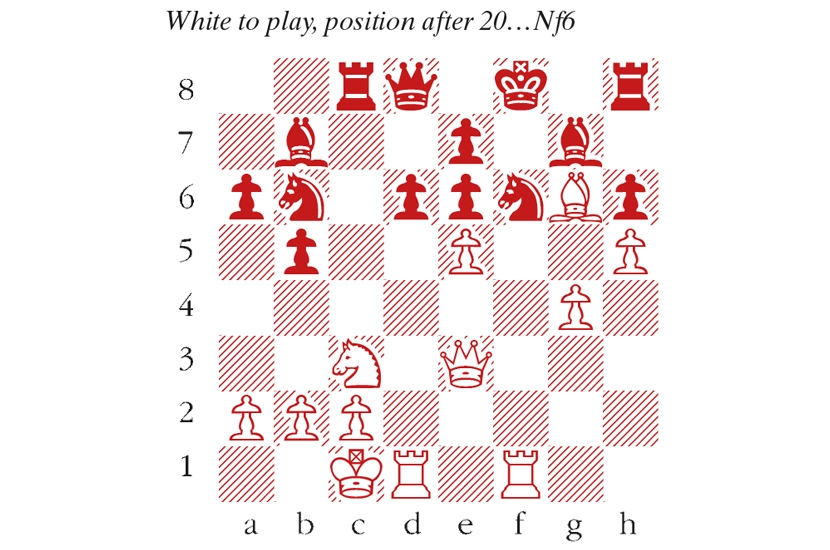Is working from home the future of a productive society, or a fleeting aberration? Nobody knows yet, but a significant minority (at the very least) have found it viable, and even desirable. The shift in perception creates possibilities that weren’t there before.
Similarly, chess organisers are discovering a strong appetite for ‘play from home’ events, and I anticipate that we will see lots of new online tournament formats in the coming years. Last summer, Fide’s Online Olympiad was the first of its kind, and later in 2020 came the Online Olympiad for People with Disabilities, which I wrote about last week. February 2021 saw another new event — the Fide Online World Corporate Chess Championship. An astonishing 288 teams entered the event, including global companies like Amazon, Facebook, Google, Microsoft, Goldman Sachs, Morgan Stanley and Gazprom. That kind of turnout strikes me as unimaginable for an over-the-board event of this nature. But online it was possible, with participants from timezones across the world. The event was hosted by chess.com, with England’s Alex Holowczak as the chief arbiter.
Teams of four were allowed to include one non-employee in their lineup, so there was a sprinkling of world-class grandmasters in the field. A few mismatched games were part of the point, as in the first round, Santosh Hassan Sampath, a financial controller at Oracle — was delighted to be paired against Magnus Carlsen. The eventual winners were Germany’s Grenke Bank, who have sponsored many high-profile chess events. In the final, they edged out Russia’s Sberbank, with Nepomniachtchi at the helm.
This was my favourite game from the event. Black, an international master representing an Indonesian port company, was the favourite in this game, but White won with a duo of beautiful sacrifices on e6 and d6.
J. Kudelka (Airbnb California)–Muhammad Lutfi Ali (PT Pelabuhan Tanjung Priok)
Fide Online World Corporate Chess Championships, February 2021.
1 d4 d6 2 Nc3 g6 3 e4 Bg7 4 Bg5 a6 5 Qd2 b5 6 h4 Nf6 7 f3 h6 8 Be3 Nbd7 9 O-O-O Nb6 10 Bd3 Bb7 11 Nge2 Rc8 12 g4 Nfd7 13 h5 g5 14 f4 gxf4 15 Nxf4 c5 16 e5 An inspiring concept, preparing to open up the light squares around the Black king. 16… cxd4 16… Bxh1 17 e6! is extremely dangerous. 17 Ne6 A tremendous sacrifice, which pays off handsomely despite not being fully sound. 17… dxe3 17… dxc3 18 Nxg7+ gives White a crushing attack, e.g. 18… Kf8 19 Ne6+ fxe6 20 Bxh6+ and Black will soon be mated. 18 Qxe3 18 Nxg7+ Kf8 19 Qxe3 Kxg7 and White can’t drum up enough play for the sacrificed piece: 20 g5 Nxe5 21 gxh6+ Kf8 and Black’s king is safe enough after 22 Qg5 e6. 18… fxe6 19 Bg6+ Kf8 20 Rhf1+ Nf6 (see diagram) 20… Bf6 was far less natural, but much stronger. 21 exf6 exf6 22 Qxe6 Qe7 23 Rxd6 Qxe6 24 Rxe6 Nc4 and with a knight for a pawn, Black should win, but White’s active pieces mean that it won’t be easy. 21 Rxd6 Brilliant! 21… exd6 Now 21…Qc7 22 Rxb6 wins. Instead 21… Qxd6 was worth a try, but after 22 exd6 Nc4 23 Qxe6 Nxd6 Black remains in dire straits. 24 Ne2, intending Nf4, maintains a fierce attack. 22 exf6 Rc7 22… Bxf6 23 Qxe6 Kg7 24 Qf7 mate. In fact there is no good way to prevent Qxe6, as 22… Qd7 hangs the knight on b6, while 22… e5 23 fxg7+ Kxg7 24 Rf7+ Kg8 25 Rxb7 leaves White with overwhelming threats. 23 Qxe6 Qd7 24 fxg7+ Kxg7 25 Qf6+ Kg8 26 Qf8 Checkmate






Comments